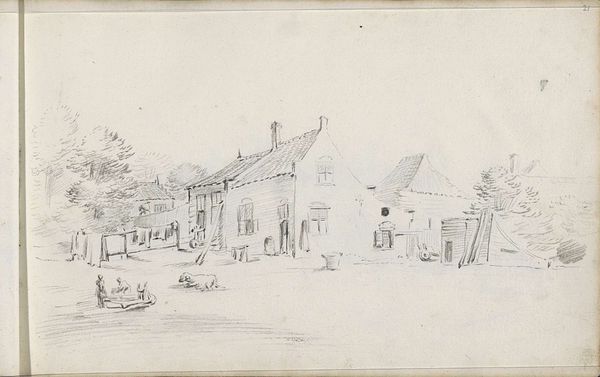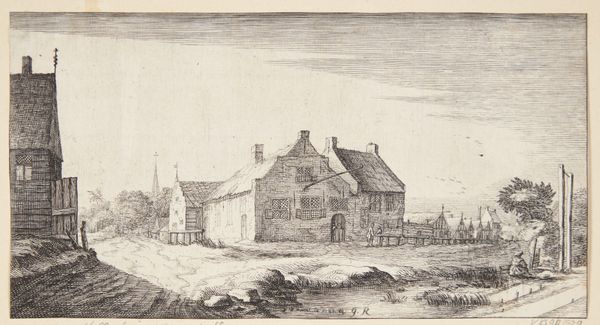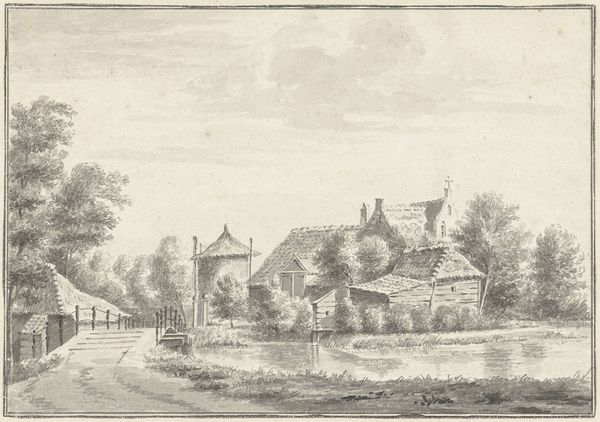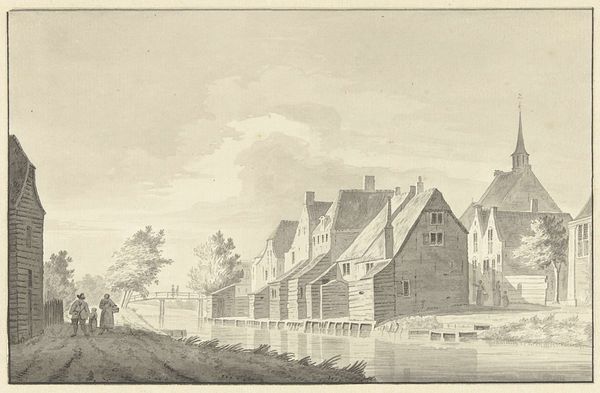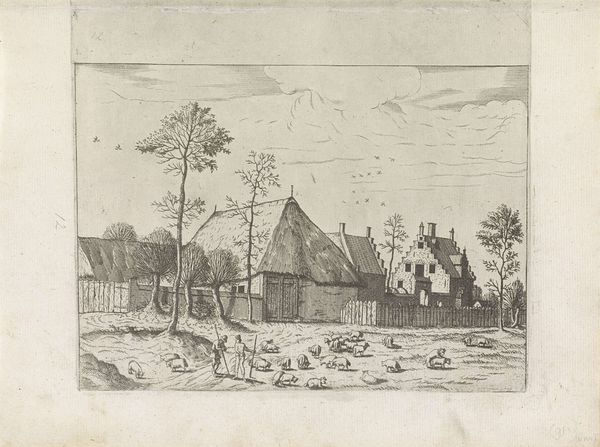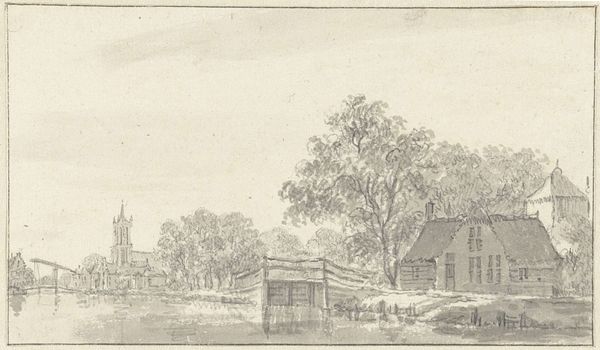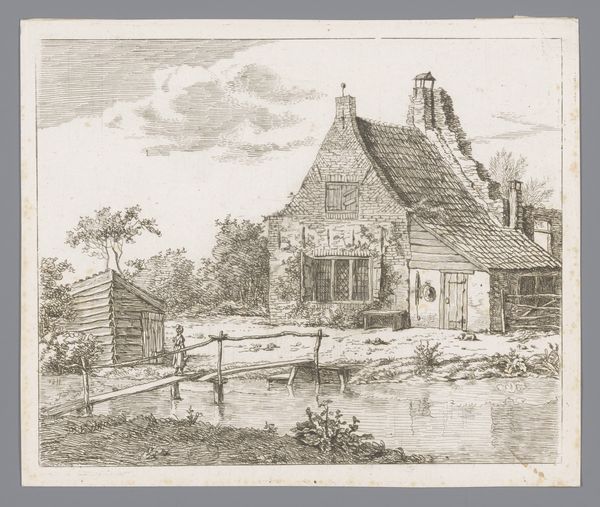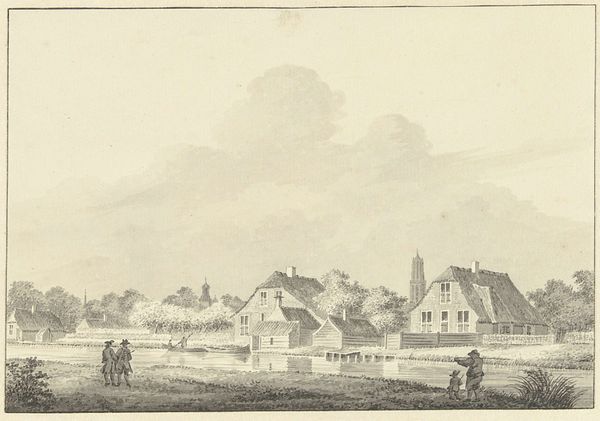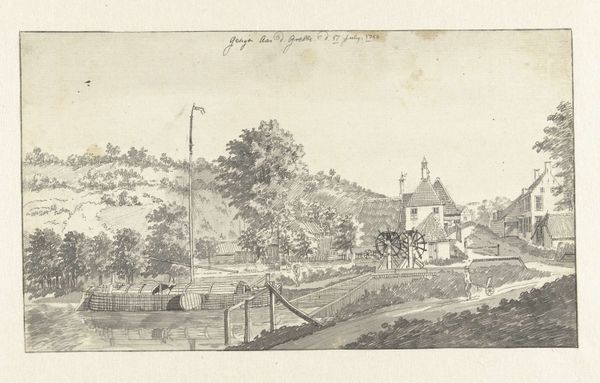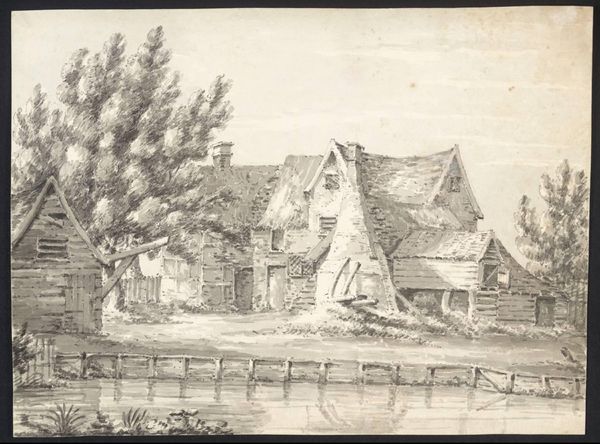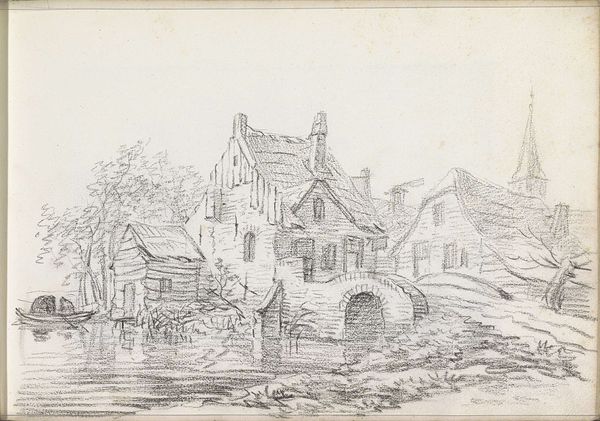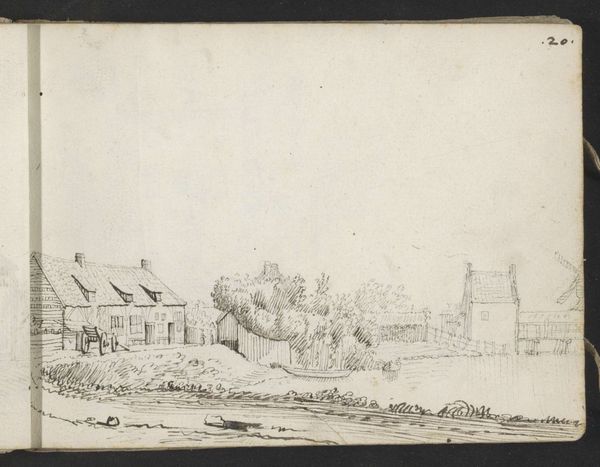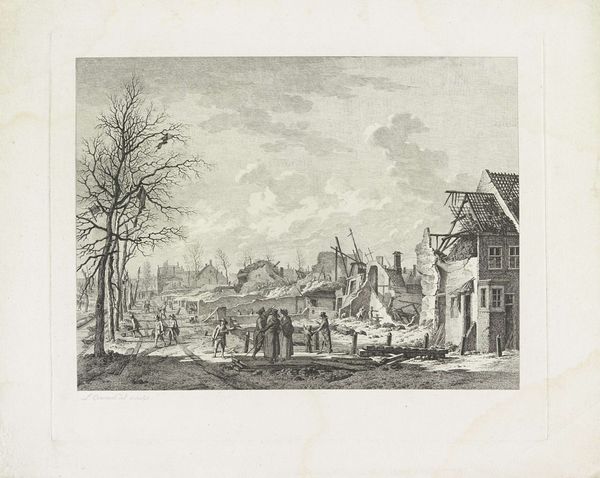
drawing, pencil
#
architectural sketch
#
drawing
#
quirky sketch
#
dutch-golden-age
#
old engraving style
#
landscape
#
personal sketchbook
#
idea generation sketch
#
sketchwork
#
pen-ink sketch
#
pencil
#
sketchbook drawing
#
cityscape
#
storyboard and sketchbook work
#
initial sketch
Dimensions: height 265 mm, width 363 mm
Copyright: Rijks Museum: Open Domain
Editor: This is an intriguing sketch titled "Gezicht in het dorp Kruiningen, op Zuid-Beveland," dating from around 1700-1800. It appears to be pencil or pen on paper, a quick cityscape. What strikes me most is its quietness; the village seems almost frozen in time. What do you see in this piece? Curator: I see a document, not just of a place, but of a particular social order. The Dutch Golden Age, even as it waned, was still grappling with class structures and the distribution of wealth. These houses, carefully rendered, represent more than just architecture. Who lived there? What were their relationships to the land and to each other? Do you notice the figures are primarily working class and women performing domestic duties. Editor: That's fascinating, I hadn't considered the social implications so deeply. I was more focused on the simple composition, the way the houses recede into the distance. So, you're saying this isn't just a peaceful village scene, but a reflection of societal power dynamics? Curator: Precisely. Look closer – is there a sense of equality in the rendering of each house? Or does the sketch subtly reinforce hierarchies through size, detail, placement? Furthermore, what isn’t shown? What voices are missing? Remember, art is never neutral; it's always making an argument, whether consciously or unconsciously. What purpose does the composition of open sky in the rendering hold? Is the rendering an invitation or exclusionary? Editor: I see what you mean. The larger house in the distance does command more attention. I guess I assumed it was simply about perspective. The lack of explicit detail maybe hides the class dynamic somewhat. Curator: Perhaps. Or perhaps it invites us to ask these questions, to unpack the silences within the image. Remember that this drawing isn't a transparent window onto the past; it's a constructed view, shaped by the artist's own position and perspective. Editor: That makes me see the sketch in a completely new light. Thank you! It's really valuable to think about the social and historical forces at play in even seemingly simple landscapes. Curator: Exactly! By interrogating these works, we unlock a richer, more nuanced understanding of our history and ourselves. And isn't that the power of art?
Comments
No comments
Be the first to comment and join the conversation on the ultimate creative platform.

